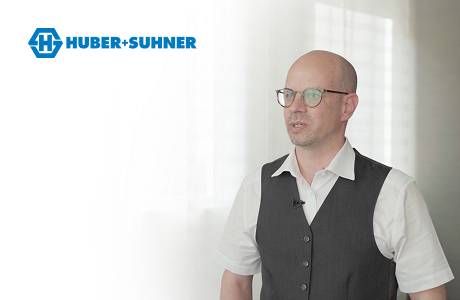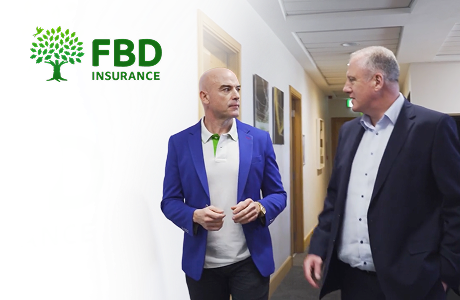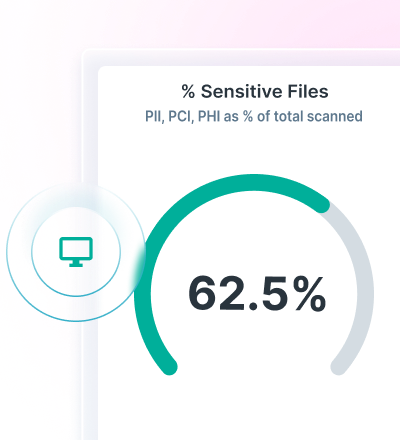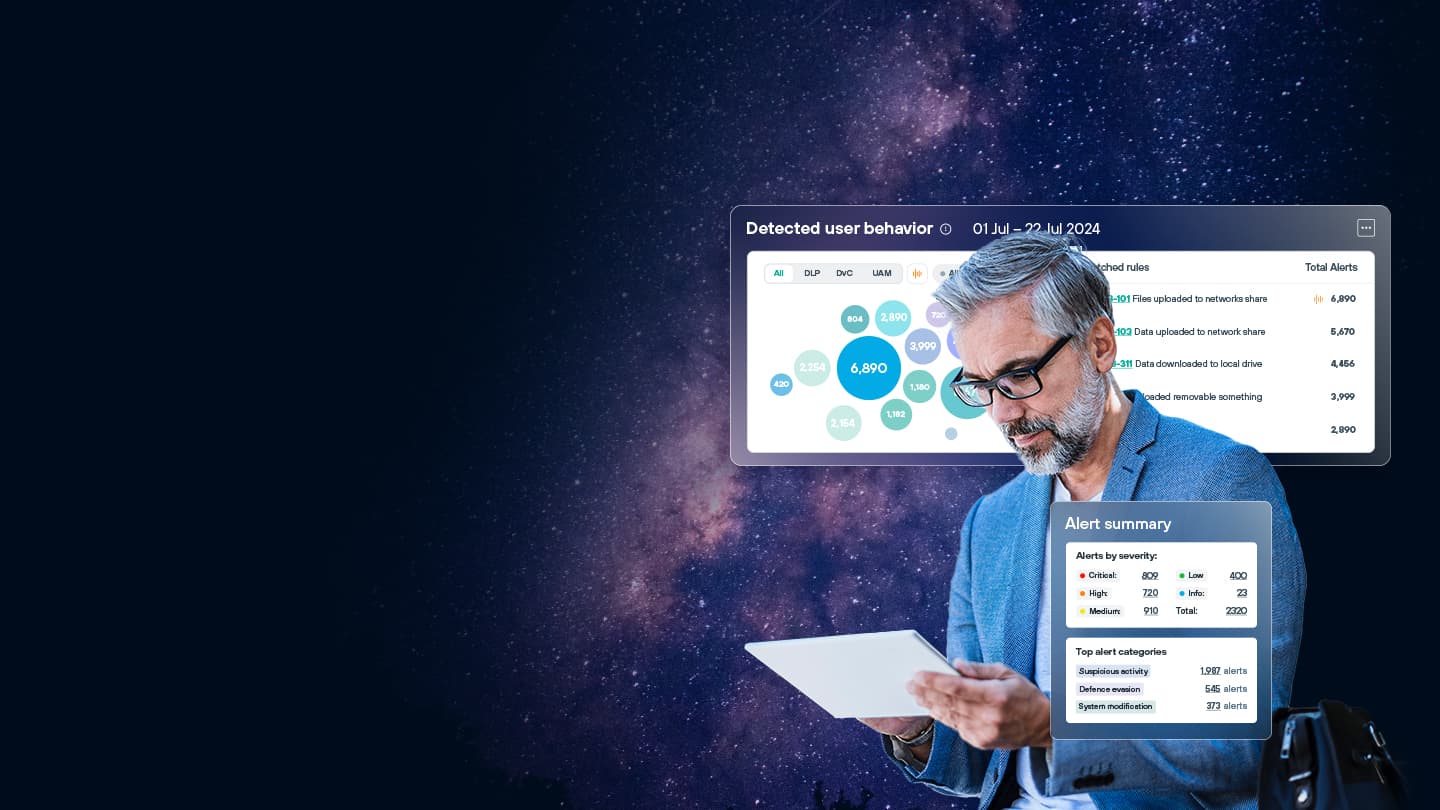
12K+ customers couldn't be wrong








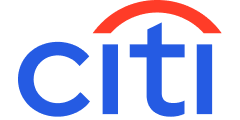

































Forcepoint DLP Software Sets the Standard
Forcepoint is synonymous with Data Loss Prevention due to its well-known, mature platform, extensive classifier and template library, and unified approach to policy management. Download the chart to see how Forcepoint DLP software compares with other vendors.
Data Protection
20%
40%
60%
80%
100%
Forcepoint
Legacy Vendors
Limited DLP
Vendors
Forcepoint vs. the Competition
Forcepoint | Legacy Vendors | Limited DLP Vendors | |
Data Protection
| |||
Unified Data Protection Coverage
| |||
Risk-Adaptive Protection
| |||
Automation & Ecosystem
|
DISCLAIMER:Product comparison is based off of in-product capabilities and cross-portfolio integrations available from the same vendor as of May 7, 2024. Comparisons do not include integrations with third-party vendors. Feature comparison is based off of each vendor’s most recent and modern version available as of May 7, 2024. Information is based off of data collected from public websites and forums, analyst papers, and product datasheets as of May 7, 2024.
Why Forcepoint DLP?
Prevent Data Loss everywhere across the organisational digital landscape.
Monitor and block data security incidents in real-time wherever users interact with data.
Streamline Compliance Worldwide
Streamline policy configuration and management with 1,700+ classifiers and policy templates to identify and secure PII, PCI, PHI and other critical organisational data.
Adapt to Risk in Real Time
Contextualize user behavior to forecast risk and automatically adjust policies to prevent security before they happen.
Unify Configuration and Reporting
Create, manage and report on policies for cloud, web, email and endpoint from one platform and dashboard.


The Practical Executive's Guide to DLP
Explore the eight critical steps to implementing Data Loss Prevention (DLP) software and get unique insight on how to generate value quickly from your newly adopted DLP.
Why Other DLP Solutions Can't Beat Forcepoint

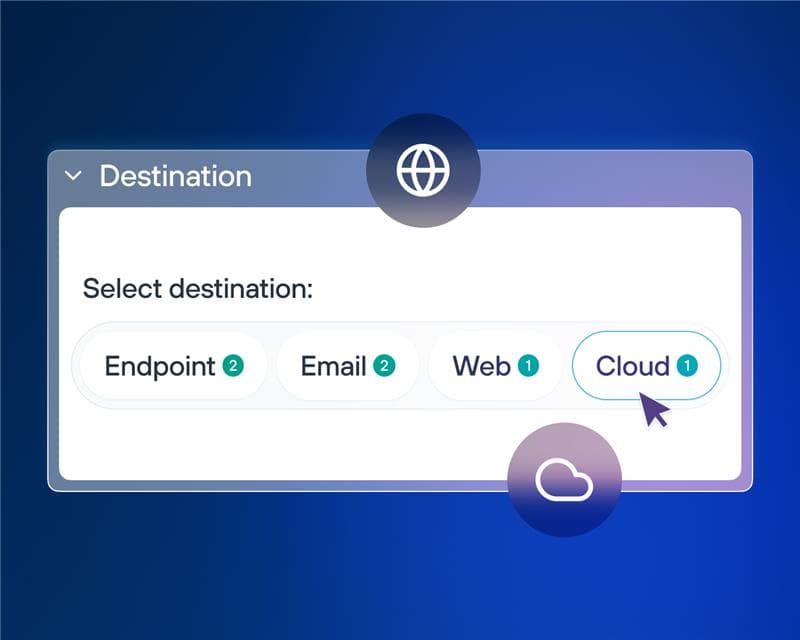


Our patented fingerprinting technology and advanced AI mesh classification engine provide unmatched accuracy in identifying and classifying sensitive data, even in complex formats and custom documents.

Protect data across SaaS applications, web traffic, email communications, endpoints, and network channels with a unified approach that eliminates security gaps.

Reduce administrative burden with intuitive dashboards, automated incident response workflows, and real-time alerts that prioritize the most critical issues.




Leverage artificial intelligence to discover, classify, and monitor structured and unstructured data with highly accurate enforcement that reduces false positives and adapts based on context and user behavior.

Control how sensitive data is shared with ChatGPT and other generative AI platforms, allowing organizations to embrace AI transformation while preventing unauthorized data exposure and maintaining compliance.

From GDPR to HIPAA, Forcepoint DLP automatically adheres to your industry’s requirements.
Deploy in the Cloud
or On-Premises
Find the perfect match. Deploy Forcepoint DLP SaaS in the cloud or Forcepoint DLP on-premises for complete control over your data security. Whether you need seamless scalability or strict regulatory compliance, our flexible deployment options adapt to your business needs. Secure sensitive information across networks, endpoints and cloud environments with industry-leading DLP software solutions.


Watch Video
A Cybersecurity Alliance Safeguarding Latin America’s Digital Future
Globaltek Security has spent over 25 years partnering with Forcepoint to deliver scalable, AI-powered cybersecurity solutions—centered on data loss prevention and secure web access.
The Future of Data Security — Advanced DLP Tools for Modern Enterprises
Your data is under constant threat — leaks, breaches and compliance failures can cripple even the most secure enterprises. Forcepoint's data leak protection tools safeguard sensitive information across cloud, endpoint and email environments. With AI-powered classification and real-time policy enforcement, you gain unmatched visibility, control and compliance — all in one, an intelligent, scalable solution. Protect what matters. Without compromise.
Our Customer Stories
Our Customer Stories






"We knew we needed data security that could perform at the highest level while integrating seamlessly into our current solutions. Forcepoint was the clear choice - not just for its capabilities but for the trust we've built with their team over time."
Read Customer StoryAnalyst recommended.
User approved.
Forcepoint is consistently ranked among the top Data Loss Prevention software and data security software providers by users and industry analysts globally.
Forcepoint has been named a Leader in the IDC MarketScape: Worldwide DLP 2025 Vendor Assessment.
Forcepoint named the 2024 Global DLP Company of the Year for the second consecutive year by Frost & Sullivan.
Forcepoint recognized as a Strong Performer in The Forrester Wave™: Data Security Platforms, Q1 2025.
Stay Informed to Secure Your Data
Frequently Asked Questions
What is Data Loss Prevention (DLP)?
Data Loss Prevention (DLP) refers to a set of technologies and strategies designed to prevent sensitive data from being lost, misused or accessed by unauthorized users. Forcepoint DLP protects data in motion, at rest and in use—across endpoints, networks and cloud environments—to ensure your critical information stays protected. Our solution combines advanced analytics and policy enforcement to help stop data breaches.
How does DLP work?
DLP uses multiple tools to identify sensitive information within an IT environment, monitor data flow in and out of the organization and block sensitive data from leaving the organization based on security policies.
What is a DLP policy?
A DLP policy is a set of conditions that define how sensitive data should be handled within an organization. These policies help prevent unauthorized access, accidental leaks or intentional data exfiltration. With Forcepoint DLP, you can create customizable policies tailored to your business needs, ensuring data is protected across endpoints, networks and cloud environments.
How do DLP policies work?
DLP policies define how data should be handled based on its sensitivity, user roles and regulatory requirements. With Forcepoint, policies are customizable. Our policy engine also helps with maintaining global compliance standards like GDPR and CCPA.
What is DLP software?
DLP software is a security solution that helps organizations prevent the loss of sensitive and valuable information by ensuring that data assets are adequately protected, stored and used.
Does Forcepoint DLP tools support global compliance beyond Australia?
Forcepoint DLP helps organisations align with GDPR requirements, supporting multinational operations across APAC and Europe. With pre-built compliance policies and seamless integration across environments, our data leakage prevention tools offer a streamlined, scalable solution. We've helped countless Australian businesses mitigate risk while maintaining operational agility.
What are the capabilities of DLP?
DLP can help your organization stay ahead of evolving threats, ensure regulatory compliance and protect sensitive data effectively and efficiently. Capabilities include policy creation and enforcement, incident response and reporting, compliance and regulatory support and more.
Do organizations need DLP?
Absolutely. If your organization handles Personally Identifiable Information (PII), Protected Health Information (PHI), Payment Card Information (PCI), intellectual property or operates in a BYOD environment, DLP is essential. Forcepoint DLP helps you prevent accidental leaks, insider threats and external attacks—protecting your brand, customers and bottom line.
How does Forcepoint help Australian businesses meet local data protection standards?
Regulatory compliance is a moving target, and failure to meet data protection standards can result in severe penalties, legal action and reputational damage. With Forcepoint as your DLP solution provider, you can confidently navigate Australia's strict regulatory landscape, including the APEC Cross Border Privacy Rules (CBPR), Australian Privacy Act and Australian Prudential Regulation Authority (APRA) requirements. Our data leak protection software provides real-time policy enforcement, automated risk assessment and AI-powered data classification, ensuring sensitive information is always handled in compliance with developing regulations.
What are best practices for implementing DLP?
Forcepoint recommends the following best practices:
Identify and Assess: Identify where your sensitive data resides and how it flows.
Classify Data: Use automated tools to label data based on sensitivity and compliance needs.
Establish Policies: Define clear rules for how data can be accessed, shared and stored.
Centralize Oversight: Avoid fragmented DLP efforts by unifying policy management across departments.
Train Employees: Educate users on data handling best practices and reinforce with real-time coaching.
What is the difference between network, endpoint and cloud DLP?
Endpoint DLP protects data on individual devices.
Network DLP monitors and controls data in motion across your network.
Cloud DLP secures data stored in or moving through cloud services.
Forcepoint DLP unifies policy creation and enforcement across all three, giving you consistent protection and simplified management across your entire data ecosystem.
What is endpoint DLP?
Endpoint DLP protects data on devices like laptops, desktops and mobile phones. Forcepoint DLP monitors how users interact with data and applies real-time enforcement to prevent unauthorized actions.
What is network DLP?
Network DLP monitors data in motion across your organization’s network. It identifies and blocks risky behavior—whether from insiders or external threats—before data can leave your environment. Forcepoint DLP offers deep visibility and control over data transfers, helping ensure compliance and reduce the risk of breaches.
What is cloud DLP?
Cloud DLP safeguards data stored in and moving through cloud services. Forcepoint DLP can augment and enhance platforms like Google Workspace and Microsoft 365.
Can Forcepoint DLP protect data on cloud applications like Google Workspace and Microsoft 365?
Absolutely. Forcepoint DLP can augment and enhance Google Workspace and Microsoft 365.
What are the key features and functionalities of DLP?
The key features and functionalities of DLP include:
- Data discovery across on-prem and cloud
- Data classification and labelling
- Advanced content inspection
- Predefined policies and templates for compliance
- Unified policy based enforcement for all channels
- Device control and endpoint protection
- Real-time monitoring and alerting Incident management and investigation
- Reporting, analytics and audit-ready compliance evidence
- Integration and deployment flexibility
What are the most common use cases for DLP?
Typical DLP use cases include preventing data breaches and accidental leaks, protecting intellectual property, and meeting regulatory compliance obligations. Common scenarios may include stopping unauthorized uploads of PII/PHI/PCI data, blocking exfiltration of source code and trade secrets and enforcing regional privacy rules like GDPR and CCPA using pre-built policy templates.
Modern deployments also focus heavily on cloud, hybrid work and GenAI. Common Forcepoint DLP use cases include securing data in Microsoft 365 and other SaaS apps, controlling data movement from unmanaged/BYOD devices, reducing insider risk by monitoring high-risk user behavior, and inspecting prompts and responses for generative AI tools. Together, these use cases map back to a single goal: keep sensitive data where it belongs without slowing users down.



